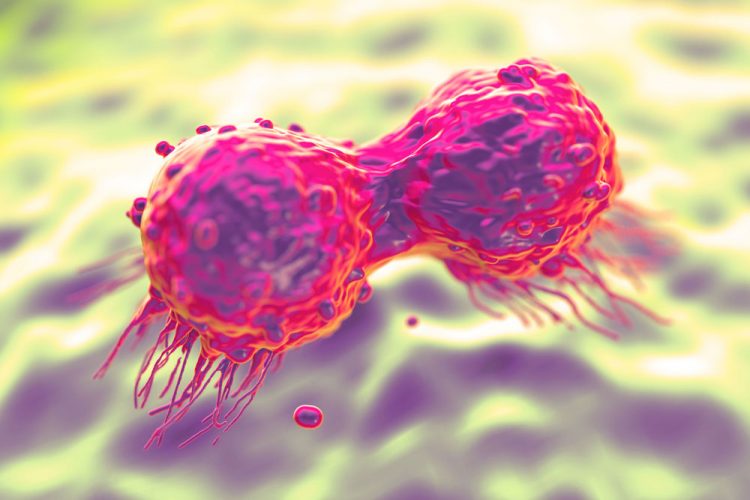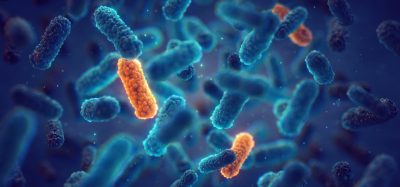Study uncovers therapeutic targets for aggressive triple-negative breast cancers
Posted: 5 February 2018 | Dr Zara Kassam (Drug Target Review) | No comments yet
New findings have made inroads into a strategy to identify TNBC tumours at risk for metastasis…


As part of a breast-cancer diagnosis, doctors analyse a tumour to determine which therapies might best attack the malignancy. But for patients whose cancer is triple-negative — that is, lacking receptors for estrogen, progesterone and Her2 — the options for treatment dwindle. Triple-negative cancers, or TNBC, also tend to be more aggressive than other cancer subtypes.
While it is known that defects in mitochondria, the cells’ energy generators, are associated with the initiation of breast cancers, it is currently unclear whether alterations in mitochondrial DNA or mitochondrial function contributes to TNBC metastasis or to their notorious resistance to chemotherapy.
New findings from a study led by researchers at the University of Pennsylvania have made inroads into a strategy to identify TNBC tumors at risk for metastasis, and eventually target these cancers with drugs. The work, which compared the metabolic profiles of different cancer sub-types, identified patterns associated with aggressive triple-negative breast cancers that point to the possibility for more accurate risk assessment and personalised treatment.
“Currently there is no molecular diagnostic to identify which TNBC patients might be poor responders to available chemotherapies,” said Manti Guha, a Research Assistant Professor in Penn’s School of Veterinary Medicine. “By identifying unique mitochondrial defects and alterations in metabolic gene expression in the most aggressive subset of tumours, this study provides new molecular biomarkers that could identify the aggressive subset of TNBCs and more importantly offer these patients promising options for treatment.”
“The role of mitochondria in disease has been largely overlooked in western medicine,” added Douglas Wallace, director of the Center for Mitochondrial and Epigenomic Medicine at Children’s Hospital of Philadelphia. “Manti’s work is transformative for this particular cancer because by identifying what is different about the mitochondrial energy system in triple-negative breast cancer compared to other, less dangerous forms of breast cancer gives us a real window into how we might intervene.”
In an earlier report, Dr Guha and colleagues had shown that, by experimentally inducing mitochondrial dysfunction, breast cancer cells can be reprogrammed towards metastasis.
“We have known for almost a century that, compared to normal cells, tumours have impaired mitochondrial functions and metabolic reprogramming,” Dr Guha said. “I was interested in identifying if there were differences in mitochondrial signatures among breast-tumour subtypes and if this variability in mitochondrial genome and functions among patient tumours can help identify cancer patients who are at an increased risk for metastasis.”
The researchers made use of tissue samples from patients with different breast-cancer subtypes, defined cancer lines and previously collected genomic data representing 825 breast cancer patients. Screening for mitochondrial DNA copy numbers, they found that patients who had more advanced disease were more likely to have the lowest mtDNA copy numbers. They also found clear patterns in mtDNA copy numbers between breast-cancer subtypes, with triple-negative cancers having the most reduced copy numbers. Additional screening revealed an imbalance in a particular sequence of mtDNA that was prevalent in triple-negative tumours but not in other breast tumour subtypes.
“This particular mtDNA sequence imbalance is fairly unique and has not been reported in cancers,” Guha said. “This could potentially be used to stratify patients into different risk categories.”
Examining breast-cancer cell lines, they found differences in oxygen consumption between triple-negative and other cancer subtypes, indicating impaired cellular respiration and thus mitochondrial function in those cells.
In a broad screen of 84 genes related to metabolism, a process that mitochondria regulate, the researchers found clear patterns that characterised triple-negative tumours from other breast-tumour subtypes. These genes could serve as potential therapeutic targets for intervention, or as biomarkers to identify breast tumors that are more likely to metastasize, the researchers noted.
“We observed unique mitochondrial aberrations in TNBCs which can serve as a diagnostic marker of TNBC metastasis and be utilized to improved combined chemotherapeutic or individualized approaches,” Dr Guha said.
To build on these findings, Dr Guha and colleagues are investigating whether FDA-approved therapies, or those currently in clinical trials, that target metabolic pathways could prove particularly effective against triple-negative breast cancer.
Related topics
Biomarkers, Drug Targets, Epigenetics, Genomics
Related conditions
Breast cancer, Metastatic breast cancer
Related organisations
Center for Mitochondrial and Epigenomic Medicine at Children's Hospital of Philadelphia, Pennsylvania University, Perelman School of Medicine at the University of Pennsylvania
Related people
Douglas Wallace, Manti Guha








